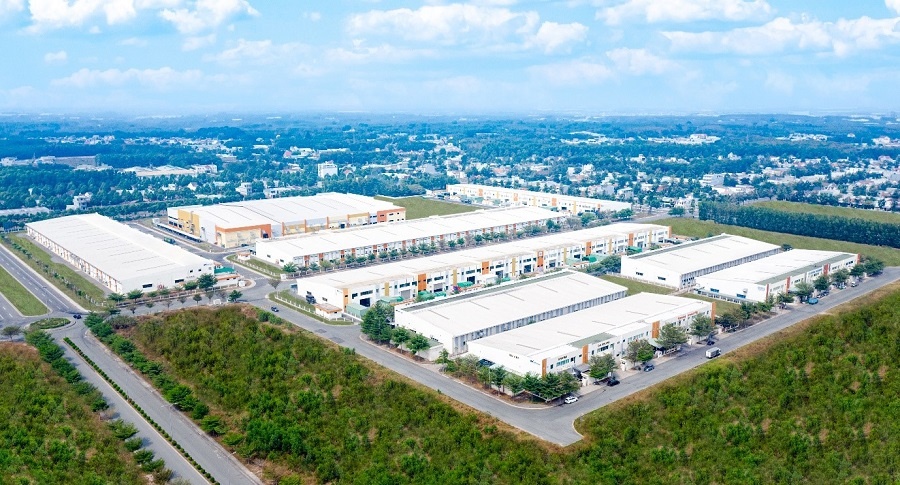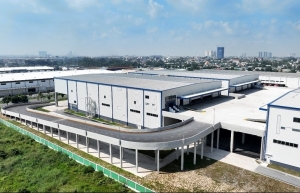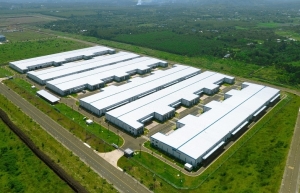Sales and leaseback - Key terms of engagement
 |
| Tu Luong (left), BW director of Business Development |
What is a sales and leaseback transaction?
A sales and leaseback transaction is where the owner of an asset, like a factory or warehouse, will sell it to a buyer or a developer like BW. The former owner will then immediately sign a long-term lease agreement to leaseback the facility from the buyer to ensure operational stability.
What are the advantages of these transactions?
The seller benefits from acquiring cash without having to relocate or interrupt running their firm. In addition, they are selling the asset at the current market price, which is likely to be more than what they initially paid for it.
The investor benefits from acquiring an operating asset that generates a monthly income.
What is the current demand for this type of transaction in Vietnam?
In developed markets, like the United States or Europe, there are many similar transactions. Businesses in those markets care more about capital efficiency and adopt asset-light models instead of physically owning the assets.
In Vietnam, businesses are still heavily influenced by the Asian concept, where a company links the fact of owning the land and facilities with business stability. Thus, this kind of transaction has not been popular here.
However, some international and even local players are starting to pave the way for sales and leaseback. In 2020, BW Industrial acquired a 10,000 square metre warehouse from Gemadept Logistics in Binh Duong under a sales and leaseback structure.
 |
Why are warehouses more popular than factories in sales and leaseback transactions?
It is due to the general specifications between the two. The majority of warehouses on the market are for storage, thus the specifications, in general, are quite standardised. If a tenant moves out, the seller can find a new one easily.
The specifications for factories are quite different from each other and depend on the specific designs and standards for an industry. Therefore, the seller needs to be wary of the capital expenditure for maintenance or ratifications.
What are the key factors for a company to consider when dealing with a sales and leaseback transaction?
There are three main factors to consider:
Firstly, the facility specifications and the quality of the buildings. An experienced developer always prepares for the worst-case scenario. When the existing tenant walks away, they need to still be able to lease the facility to other tenants. Therefore, technical due diligence is essential. Developers should check on the design, specifications, structure, and condition of the facilities to evaluate its build and maintenance for continued use over the next 20 or 30 years.
Secondly, the price. In a sale and leaseback, the seller wants to sell the asset at the highest price, and then lease the facility at the lowest rent as possible. However, the buyer will also have a required rate of return. In doing a deal, they have to meet certain returns, so both sides have to work together on a win-win basis.
Finally, the ownership and the deal structure. In Vietnam, foreign buyers cannot acquire assets directly, so they buy shares in the company which owns the asset. However, a buyer will have to consider the capital, cash flow, tax development risk, and licensing before moving forward with a sales and leaseback structure.
 | IZ land leasing causes concerns for businesses Land lease in industrial zones is a major concern of manufacturers investing in Vietnam. This short Q&A with Hao Tran, head of Legal at BW, provides a legal perspective. |
 | Divestment an option in industrial real estate Investment and divestment in real estate are two sides of the same coin. Divestment is an adaptive change to a company's ownership and business portfolio in reaction to internal and external changes. There are many reasons companies choose to divest and several challenges to deal with when it happens. This short Q&A with Rebecca Trinh, BW head of Investment, will provide with a better understanding of divestment in industrial real estate. |
What the stars mean:
★ Poor ★ ★ Promising ★★★ Good ★★★★ Very good ★★★★★ Exceptional
Related Contents
Latest News
More News
- Sun Group breaks ground on $2 billion Van Don casino complex (December 19, 2025 | 18:14)
- Rare, beautiful, sustainable: the mark of iconic real estate (December 19, 2025 | 08:00)
- Owner-occupied housing stabilises, paving the way for new growth cycle (December 18, 2025 | 17:04)
- Unlocking urban potential of smart cities (December 18, 2025 | 16:50)
- Green finance offers 'passport' for Vietnamese construction, building materials firms (December 15, 2025 | 08:00)
- Gamuda Land commit long-term investment (December 12, 2025 | 11:49)
- HITC ties up with Evolution to develop AI and hyperscale data centres in Vietnam (December 11, 2025 | 12:09)
- Real estate deals boom via high-profile names (December 08, 2025 | 11:32)
- Industrial segment shaped by M&As (December 08, 2025 | 08:00)
- The Privé sets the benchmark for luxury real estate (December 05, 2025 | 08:28)

 Tag:
Tag:





















 Mobile Version
Mobile Version